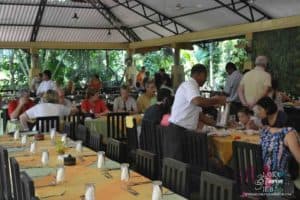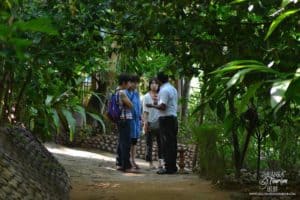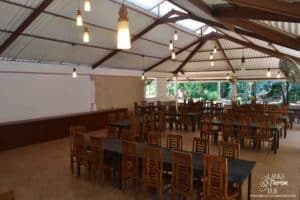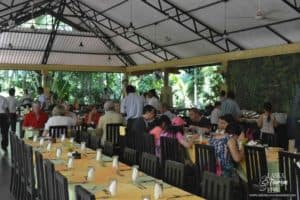Sri Lankan Spices
History of Spices
Spices which we take today for granted have once been the biggest trade in the world. It has contributed a great deal to the discovery of new land. It has made kings conquerors. It has created and destroyed empires. It has made masters slaves. And this list of things is unending.
We hear stories of the Ancient Greeks and Romans controlling the spice trade in Europe and we also hear that once spices were used as a form of payment. In other words spices like cinnamon and cloves have been used as currency a long time ago. All this is evidence to suggest how much spices were valued all over the world.
As already mentioned the spice trade was mainly in the hands of the Arab traders who made a lot of profit by acting as middlemen. The Europeans did not have access to the Eastern spice market because during that time there was no sea route to reach the spice producing countries of Asia.
Nevertheless during the 15th century that is during the Renaissance period people started to look afar for new opportunities. It was during this period they discovered the new sea route to the East and started to dominate the sea trade and particularly the spice trade in the world.
Among the nations who wanted to control the spice trade were the Portuguese, Dutch, Spanish, and the English. Not only did they engage in the spice trade ,they also changed the whole of Asia tremendously
Cinnamon and Sri Lanka
Cinnamon was one of the initially exchanged spices of the old world. Ceylon Cinnamon is an evergreen tree. This is a plant indigenous to Sri Lanka. Cinnamon produced in Sri Lanka has gained a long standing fame in the global spice market because of its unique kind, quality, shading, flavor and fragrance.
The exceptional system of handling and processing cinnamon is one of the reasons why Ceylon cinnamon has gained so much popularity among the cinnamon lovers all over the world. There are some families in Sri Lanka who had been in the cinnamon business for centuries. And their know-how had been handed down from one generation to the next. According to some, Cinnamon is the most essential and significant spice found in Sri Lanka. Prior to the appearance of present day food preserving methods, Europeans have utilized Cinnamon with Pepper to preserve meat. Some add cinnamon into tea because of its smell & flavor. Cinnamon is used in certain pharmaceutical products as well. In addition cinnamon is used when making perfumes, cosmetic products and in incense sticks.
Ceylon Cinnamon and Cassia were the most exchanged spices of the old world. ‘Ceylon Cinnamon’ is known as “sweet cinnamon” and “genuine cinnamon” which is more popular and sweeter than Cassia.
Cinnamon or Cassia
Cassia is a plant very much like cinnamon. Cassia is mainly from countries like, China, Indonesia and India. This was a good substitute for cinnamon when the price of cinnamon in the spice market went up. Still some mistake cassia for cinnamon because the taste and the smell of cassia is very much like that of cinnamon. But there is a way to distinguish between cassia and cinnamon. That is from the smell and the the taste of the spice. Cassia has a very strong smell and cinnamon a very pleasant smell. Cassia alsohas a strong taste whereas cinnamon has a sweet smell. These are the two ways you can distinguish between cinnamon and cassia.
Sri Lanka is known all over the world for its rare spices and herbs.
In fact to spice lovers Sri Lankan spices mean an expression of a colorful history and delightful surprise, just like the Island.
At Sri Lankan Spice and Herbal Garden you will get the chance of seeing how spices and herbs like Turmeric, Pepper Corns, Cloves, Cardamom, Nutmeg, Vanilla, Cinnamon, Cocoa, Aloe Vera, etc. are grown in their natural environment.Which is located in the Hill Capital,in close proximity to Peradeniya Royal Botanical Garden.
The specialty of our spice and herbal garden is that you can learn about the spices and natural products while being in a serene, healthy and pollution free environment. In other words it is totally away from the hustle and bustle of the city.
Spices in Sri Lanka
Cinnamon (Kurundu) :The Dutch started the cinnamon industry in Sri Lanka, and even today the island is the biggest producer of this, the most delicately scented of spices, which is used in curries and rice dishes.
Cardamom ( Enasal) :Cardamom is an excellent in moderation to flavor curries, for sauces, and to give aroma to confectionary, especially wattalapam, atypical Malay egg pudding.
Pepper (Gam Miris) : This pungent berry, the earliest spices known to human kind, is used as a substitute for red-hot chilies. The world famous soup Mullingatawny (Tamil pepper water) is made from this spice.
Cloves (Karabu Nati) : One of the best known of all spices, but also one of the most difficult to use because of their pungency, cloves are used in many types of curry and confectionery.
Coriander (Kottamalli) : Coriander is a basic ingredient used daily in Sri Lanka to add flavors to curries. Normally only the seeds are used, which are usually roasted before being ground.
Turmeric (Kaha) : Turmeric, which is often confused with saffron, is used as a condiment in curries. A little turmeric and salt are all that is necessary to preserve fish and meat.
Fenugreek (Uluhal) : Fenugreek, which has a rather unpleasant scent and a bitter taste, is used to flavor and give the necessary binding or thickening effect to curries.
Sweet-cumin (Maduru) : This is spice is used in the preparation of curry powder together with coriander and cumin, and also as flavoring for sweet dishes and alcoholic liqueurs.
Cummin (Suduru) : Cummin, which has a remarkable pungent and aromatic flavor, is one of the ingredients of curry powder together with sweet-cummin and coriander.
Curry Leaves (Karapincha) : Curry leaves are generally used fresh in most rice and curry dishes, giving a very distinctive flavor and fragrance.
Lemon Grass (Sera) : Lemon Grass, as its name implies, has a strong taste and smell of lemon. The bulbous part of thr plant is used to flavor meat and fish dishes.
Gamboge (Goraka) : Gamboge, usually ground with a little hot water, is used as a souring and thickening agent in white curries, fish and meat preparations, and certain vegetable curries.
Spices Trees
Image Gallery




Plan your holiday with Sri Lanka Tourism Hub and we will arrange a visit to a classic handicraft shop to experience Sri Lankan art & craft and also buy memorable gifts for your loved ones..
